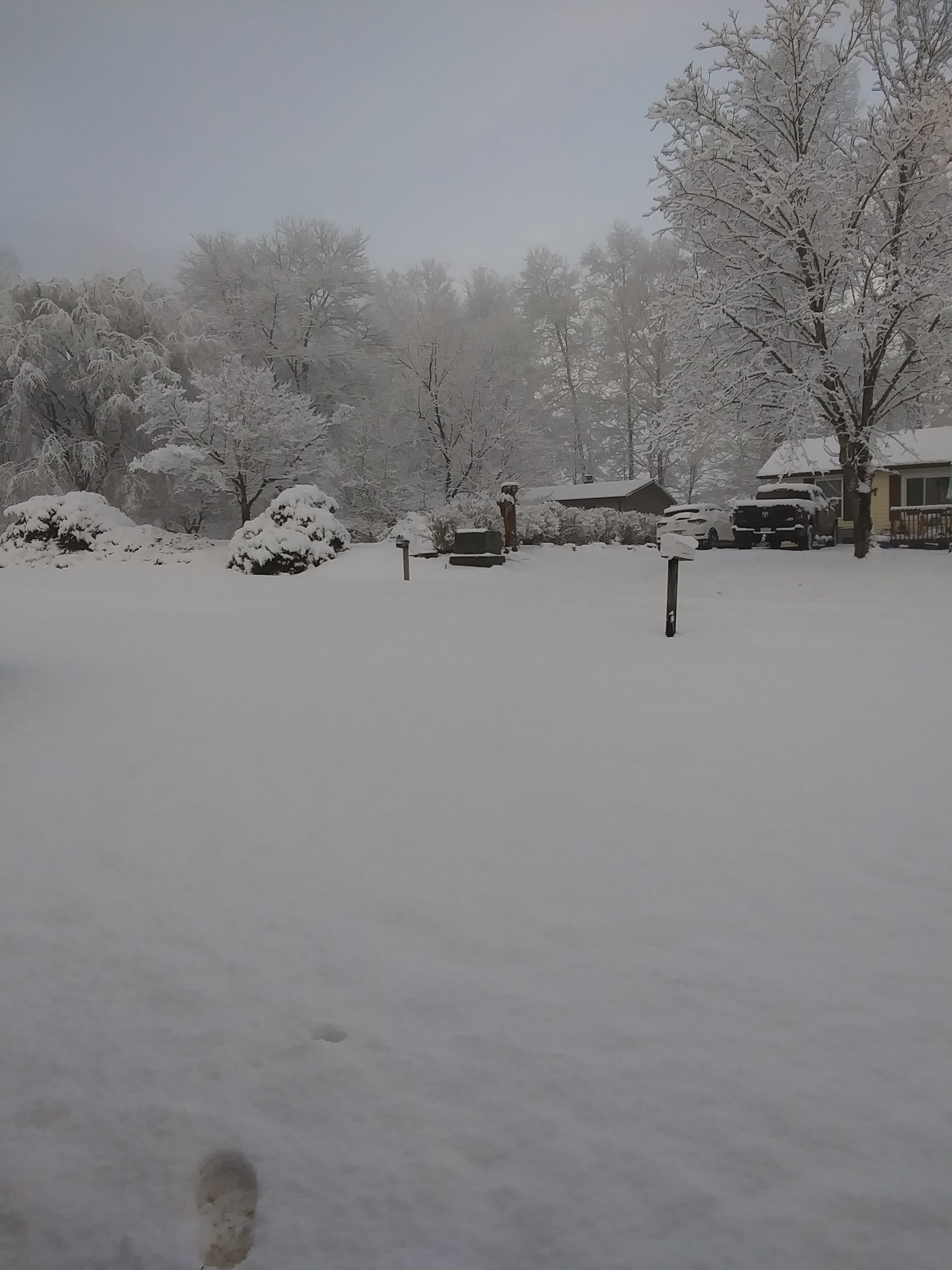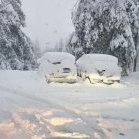-
Posts
2,850 -
Joined
-
Last visited
Content Type
Profiles
Blogs
Forums
American Weather
Media Demo
Store
Gallery
Posts posted by Daniel Boone
-
-
2 hours ago, John1122 said:
The frosty mornings this week have leaves on fire. Based on how it looks now, I'd say we will peak here by October 20th.
Yep. Same here .
-
 2
2
-
-
I'm sure many on here notice, the first scattered Frost are never forecasted or mentioned as even a possibility. I don't quite understand that as If I were working with the NWS I would at least mention the possibility in mountain Valley's when conditions are like they've been the last few mornings.
-
 1
1
-
-
6 hours ago, Carvers Gap said:
12z EPS looks solidly chill. And yeah, wouldn't be the first time to use up a great pattern in October. Seems to be a trend during the past decade or so. I have seen way more early season snow/cold than normal of late. General rule -> Tropical hybrid system which produces inland snow wrecks havoc on early winter projected patterns.
2000-01 was a nina and featured a much below avg October. Fairly cold Winter for the area albeit rather dry with not alot of Snow.
95-96 cold late October and November.
77-78 featured measurable snow Oct. 13 down to 1600 ft during Squalls. However, enso was neutral that Winter.
However, as you alluded, it seems early snow/cold has been an omen of late.
-
 2
2
-
-
The big la nina pac ridge very prominent. Decent Greenland blocking. If there was a y semblance of a southern stream that would be a pretty good setup.
Also, shift that pac ridge east and quite possibly some northern stream action could produce.
-
17 hours ago, BlunderStorm said:
If I'm not mistaken cool and dry conditions once in October are considered ideal for fall foliage. Display wise we may all be in for a treat. So long as those reds oranges and yellows aren't flames.
Yeah, considering if it's not hot with it and if September wasn't dry. My location was received about half the average for September so, hopefully won't affect them too much. Although,It has some as some leaves are brown, particularly on edges. Maples are coloring up good so far.
-
57 minutes ago, BlunderStorm said:
It's looking like Octobers debut this year is going to feature a high in the 40s. Wowza. Winds were negligible beyond a moderate breeze. My digital rain gauge is unreliable though I can say the total has been modest, ~1.25" or so. Hopefully that should suffice for the next two dry (?) weeks ahead. I gotta say, I wish Ian tracked further west for the rest of y'all.
Yeah, you're fortunate to get in on a decent part of the western flank. Only 0.21" here. Terrible !
-
On 9/29/2022 at 2:23 PM, Terpeast said:
Leaning towards this kind of thinking/temp departures, too.
Same here. Although, November may turn rather cold 2nd half.
-
1 hour ago, John1122 said:
Looks like most of us are barely going to get anything from Ian at this point and the 16 day forecast is dry as well. Unfortunate as we head into fire season.
Yeah, depressing. I was concerned it may shift east. Should of figured with that boundary sitting off the coast.
-
35 here yesterday morning with patchy frost. Some Valley locations in Lee County reported widespread frost and low 30's. Not as cold this morning as wind kept temps up some.
-
 1
1
-
-
40 here this A. M.. May be patchy frost in the morning, especially in sheltered valley's.
-
 2
2
-
-
14 hours ago, Save the itchy algae! said:
Oops
Well, looks like we're going to be getting what I've been rooting for. I'm with John in it staving off fire danger even if just has minimal effects on the future resultant pattern.
An expansive area of wet soil will have at least somewhat of an impact.
-
 1
1
-
-
4 hours ago, snowman19 said:
If there wasn’t the very high solar flux that winter, on paper, that winter probably would have been a good one for the east coast. He made himself look like a fool with the famous “vodka cold” comment and the instance that it was coming until he finally admitted that it was a lost cause come mid-February of 2002
Yeah, solar flux did appear to be a major culprit. Also , the late season Hurricane that pumped very warm air into the high latts. had an effect as I recall.
-
 1
1
-
-
On 9/16/2022 at 9:11 PM, snowman19 said:
The updated NWS CPC winter forecast FWIW: https://wjon.com/winter-weather-outlook-from-the-climate-prediction-center/
Not surprising from them. Enso state climatology.
-
Looks good Howard. I think this Winter has a decent shot at being colder and snowier than last. PDO Looking better, NAtl SST profile should improve. Nina should weaken as Winter progresses.
Oh .. let's not forget Jack's "cold pool".
-
5 hours ago, John1122 said:
The GFS is hot still, but not as hot as it was 36 hours ago, which was bonkers hot, the Canadian is cooler than the GFS and the Euro is cooler than the Canadian at D8-10. The ensembles are seemingly hotter than the ops. One thing that does appear to happen, it will get dry here during that time frame. I hate it when we get really hot and dry as leaves begin to fall due to wildfire danger literally in my back yard.
Right with you brother. Very depressing. I'm rooting for tropical activity or something to throw a monkey wrench into forecasted pattern.
-
 1
1
-
-
3 hours ago, Carvers Gap said:
Agree. Seasonal models seem to want to center a cold shot towards late December into January. HOWEVER, as you aptly note, climatology would favor a cold Nov/Dec. Not a slam dunk by any means as I am sure there are a cluster of colder Januarys(thinking of @John1122's examples from last year or the year prior). Also, man, I am not expert on third year La Nina's. Since really beginning to follow the wx, I don't think I have seen too many(maybe 1 or 2). Plus, the Euro seasonals IMHO are not super accurate until the month before the winter season begins. Lots of wiggle room right now. Great post though!
Yeah, you are so right buddy. Third year's are almost in a class of their own. Don't know exactly why.
This Summer's Pattern attests to that. The lack of Atlantic Tropical activity; robust Pacific. Pretty much opposite of typical Nina.
-
 1
1
-
-
If Nina is the dominant driver , late fall and early Winter may buck the seasonal Euro November/ December Outlook.
-
 2
2
-
-
15 hours ago, Carvers Gap said:
Yeah, the rainfall which we received here is basically used up. Nina summers are the worst. I hold out hope that the ridge will hold out west through August. When it comes eastward again, it is gonna get HOT again!
Right with you man !
-
 1
1
-
-
On 6/26/2022 at 5:52 PM, Carvers Gap said:
First measurable rainfall IMBY in roughly eighteen days. Tied for the driest my yard has ever been until today. Finally, some showers today. It is not nearly enough, but we will take anything at this point.
Wound up with 0.85" from the weekend system. Big help but, as you said, not nearly enough. At this juncture, I'm hoping for some tropical influence soon . I still am concerned for overall continued dryness possibly leading to drought conditions late Summer.
-
The feared heat and drought conditions I suspected would probably arrive in June has unfortunately came to fruition. So far only 0.91" Rainfall has been measured this Month at my Home.
-
 1
1
-
 1
1
-
-
-
11 hours ago, jaxjagman said:
Yep. Been watching that too. May offset any attempt at a hot/dry early Summer. Still have concerns of hot and dry mid summer on.
-
Kmrx forecasted highs busted yesterday and today. Forecasted high yesterday: 77, actual 69. Forecasted high today : 74, Actual 67.
Cloud cover and Rain was culprit but, that was expected. I'm curious to whether Model's busted or forecasters . If models were depicting correctly, quite possibly forecasters were adjusting to climatology. That can really burn you sometimes.
-
5 hours ago, nrgjeff said:
Observed sculped low-top structure on the Cumberland Plateau between Spencer and Sparta, Tenn. However no lightning. Almost reminded me of tropical remnants. Except it's 20 degrees cooler up there (Thursday vs a tropical day lower elevation). The surface wind was howling though.
Yeah, very much acted and looked like a tropical remnants setting.
-
 1
1
-



.png.065272dd78ef43daaa1e0c18b9fc2793.png)
Winter 2022-23 Early Speculation
in Tennessee Valley
Posted
Yeah, there's others I'm sure but, as you said earlier, many times the pattern flips for Winter. As of now IO forcing is supportive for Eastern trough , as wave lengths change we need that forcing to change too as you know ( probably why many times pattern flips for Winter). Even if it doesn't, it's still not always set in stone to flip trough west as other drivers can throw a monkey wrench in that .
Hopefully, ECMWF -NAO Forecast verifies. Of course we all know how accurate they are when predicting that.